Headed by Robert Catesby, the Gunpowder Treason Plot, or the Jesuit Plot, aimed to blow up England’s State Opening of Parliament and assassinate King James I on November 5, 1605. The plotters were indignant about the treatment of Catholics under their Protestant rulers, and they intended to restore Catholic freedom and control. However, their scheme was discovered and reported. At midnight of November 4th, authorities discovered 36 barrels of gunpowder stashed under one of the Houses of Parliament. As one of the most momentous occasions in all of British history, large celebrations take place on November 5 every year to commemorate the foiling of the Gunpowder Plot.
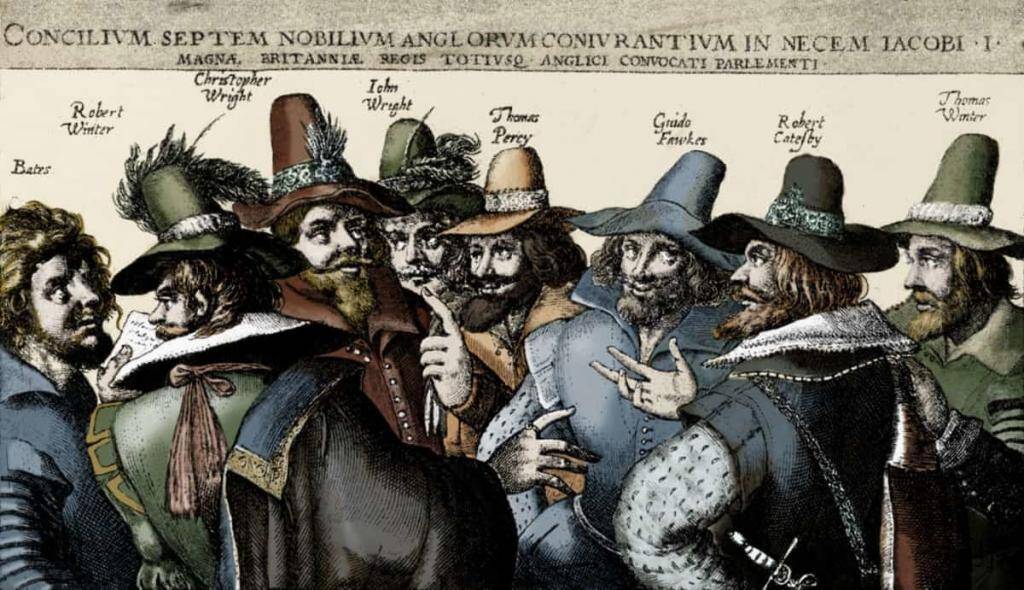
What Caused the Gunpowder Treason Plot?
The cause of the Gunpowder Treason stemmed from the long history of difficult Catholic-Protestant relations in England. Religious rifts had been plaguing the nation for hundreds of years. Historically speaking, Britain largely followed Pagan traditions. Romans later introduced Christianity to just a few places. Then in about A.D. 600, Pope Gregory sent Augustine on a successful mission to convert Anglo-Saxons to Catholicism (DCC). For more than 900 years, the Roman Catholic Church controlled the Church of England.
In 1527 King Henry VIII petitioned the Pope to annul his marriage to Catherine of Aragon so that he could marry Anne Boleyn, who he hoped would produce a male heir. However, when the Pope denied his request, King Henry implemented the English Reformation to break away from Roman Catholic dominance. He established himself as Supreme Head of the Church of England and demanded the loyalty of his people, including Catholics. Hundreds of rebels were executed (Potts). Additionally, Henry VIII dissolved more than 800 religious houses and confiscated their assets.
After King Henry and his successor King Edward died, Henry’s daughter Mary became Queen of England. She followed in her Spanish mother’s footsteps and practiced Catholicism, therefore, she became a champion of the Roman Catholic world when she reinstituted papal authority. As a Catholic leader, she was extremely conservative and brought back strict heresy laws. This led to the execution of more than 300 Protestants, and the Queen earned the name, Bloody Mary. However, her reign was short-lived, and after only about five and a half years on the throne, Mary died.
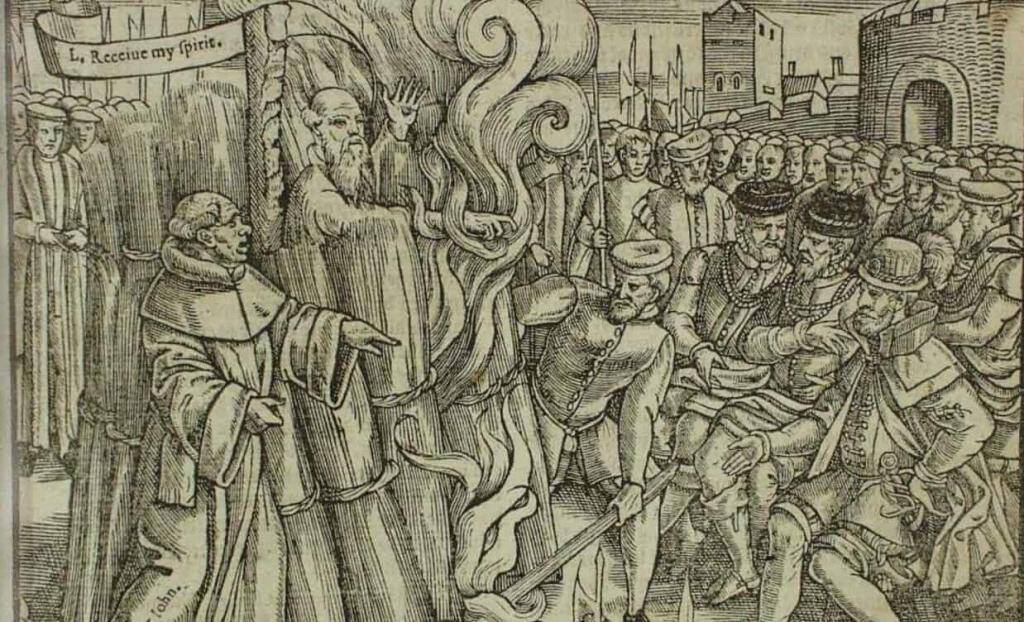
The Protestant Queen Elizabeth
In 1558, Mary’s half-sister Elizabeth ascended to the throne. The Protestant Queen quickly reestablished the Reformation (Martin). Additionally, she implemented a new statute called the Elizabethan Religious Settlement. This made it mandatory for anyone taking official office within the church to declare allegiance to the reigning monarch as the Head of the Church and State. Those that did not follow this decree would be fined heavily, and repeat offenders would either be imprisoned or even executed. Hence, Catholicism became marginalized and all but illegal to practice. However, priests did keep the religion alive in secret despite the threats of torture or execution.
James IV Ascends to the Throne
Elizabeth never married or had a family, which meant that there was no heir to the throne. Robert Cecil, the Secretary of State, held secret talks with James VI of Scotland about succeeding Elizabeth. On March 24, 1603, the Queen died. The Catholics had hoped to install the daughter of Philip II of Spain, Infanta Isabella, as the new Queen. However, their aspirations were dashed when Cecil pronounced James as King of England. James did have a family, though, and was proclaimed to be the “natural order of things.” At the very least, he could provide a healthy legacy for the English monarchy.
Papists of the time, along with Jesuit priests, tried to offer their support for the new King. The Catholic community had high hopes that James would make life easier for them and grant them more rights. Instead of living under the threat of execution, practicing Catholics were promised exile if convicted for their crimes. But this was not enough. Unfortunately for them, King James maintained many of the harsh laws that had been formerly implemented. Thus, many English Catholics became exceedingly discontent and derived plots to change things on their own terms.
Other Plots Against King James
The Gunpowder Treason was not the only action taken against King James. Members of the Clergy would get together and try to counter James’ apparent lack of tolerance toward Catholics. Two of them, William Clark and William Watson, engineered an idea they called the Bye Plot. After capturing James, they would have imprisoned him in the Tower of London until he promised to be more appreciative of Catholics. This plan failed and both were executed as a result.
Another plan to assassinate King James and place Elizabeth’s cousin Arabella Stuart on the throne was also foiled due to a lack of funding from King Henry III of France. Only one of these plotters of the so-called Main Plot was sent to the gallows. The three others, including a certain Walter Raleigh, were all pardoned because James did not want his tenure to begin with excessive bloodshed.
Founding the Plan
The Gunpowder Treason likely came the closest to forcing a new monarchy in favor of Catholics. In order to accomplish this, the group intended to install King James’ 9-year-old Catholic daughter, Elizabeth Stuart, onto the throne. The scheme involved a dozen fellow Catholics who shared the same disillusionment with the King. Its leader was Robert Catesby. He recruited the entire group in a matter of weeks and spent several months or more developing a plan. In May of 1604, a meeting between “Catesby, Thomas Winter, John Wright, Thomas Percy, and Guy Fawkes [took place] in the Duck and Drake in the Strand, London, where Catesby proposed the attack on the opening of Parliament” (Parliament.uk).
The King himself would be present at the State Opening of Parliament, in addition to all the other nobles and dignitaries of the Church of England. For Catesby and his followers, this would be the perfect opportunity to solve all of their problems in one fell swoop – the once in a lifetime chance.
Getting into the Parliament
The most important factor in devising a successful assassination attempt was to procure a property as close to Parliament as possible. In May 1604, Thomas Percy, one of the founders of the Gunpowder scheme, proved to be instrumental. As a wealthy aristocrat, he rented a small cottage near Westminster Palace, the location of Parliament. In June of 1604, Percy received the perfect appointment as a King’s bodyguard. He now had easy access to the Palace. Using his wily influence, he found and rented a cellar storeroom beneath the House of Lords. Subsequently, the group moved 36 barrels of gunpowder into the cellar where they planned to blow up the Houses of Parliament. (Britannica).
One of the team members, Guy Fawkes, was responsible for lighting the fuse. He seemed the logical choice with more than a decade’s worth of military experience and some familiarity with gunpowder. As history would prove, this was the riskiest of all the roles in the entire plot.
Why Did the Gunpowder Treason Fail?
The Gunpowder Treason ultimately failed as a result of one letter that tried to warn someone of the impending danger. About a week before Parliament was due to recommence, a mysterious person secretly gave a particular servant an urgent letter. The person then directed the servant to give the letter to his Catholic master Lord Monteagle, who happened to be a cousin of one of the conspirators. Monteagle’s servant recited the letter that forewarned Monteagle not to attend the State Opening of Parliament. The Lord immediately gave the letter to the privy council Robert Cecil who, in turn, gave the letter to the King. (National Archives).
Monteagle Letter That Foiled the Plan
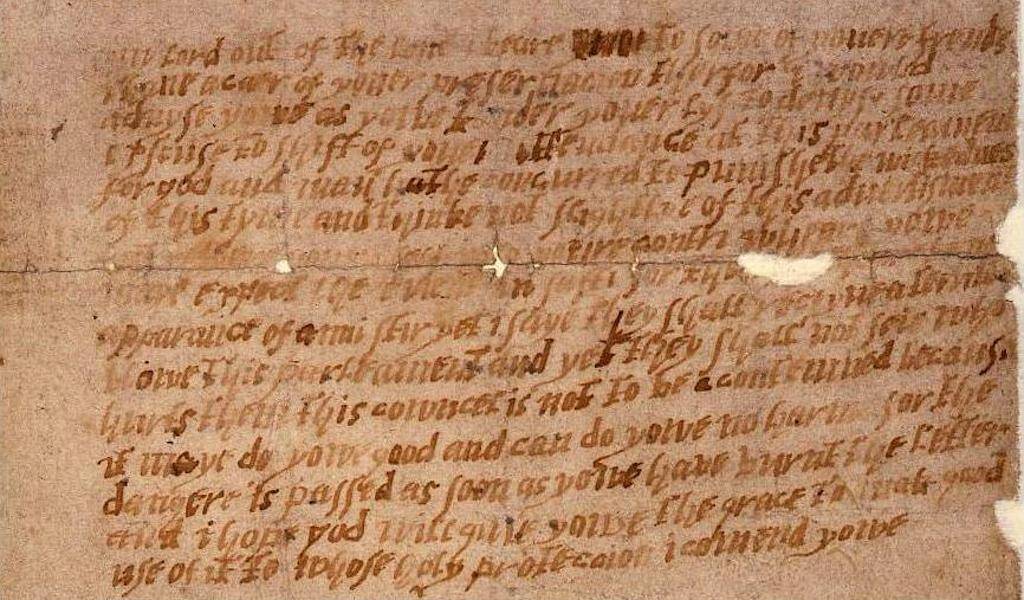
The simplified translation of the Monteagle letter from the National Archives follows:
“My lord, out of the love I have for some of your friends, I want to make sure you are safe. Because of this, I would advise you to not attend this sitting of parliament because God and man have agreed to punish the wickedness of this time. Do not think this is a joke, go to your estate in the country where you will be safe, because although there is no sign of any problem yet, this parliament will receive a terrible blow, but they will not see who it is that hurts them. This advice should not be ignored as it may do you some good, and it can do you no harm because the danger will have passed as soon as you have burned this letter. I hope God grants you the grace to make good use of it, and that he protects you.”
You May Also Like: Origin of Lond Bridge is Falling Down
Discovery of Gunpowder Barrels
The King ordered a search of the building which turned up Guy Fawkes and the barrels of gunpowder in the storeroom. They immediately arrested and questioned Fawkes. However, he initially denied any knowledge of a conspiracy and refused to say much else at all. Sir William Wade, the Lieutenant of Fawkes’ prison at the Tower of London, used every means at his disposal to get more details about the plot. Fawkes resisted as long as he could but eventually surrendered all the names of the other conspirators. With a rather shaking hand, he wrote them all down on parchment.
The thirteen conspirators were:
Robert Catesby
John Wright
Guido “Guy” Fawkes
Thomas Percy
Thomas Wintour
Francis Tresham – the cousin of Lord Monteagle
Robert Keyes
Thomas Bates
Robert Wintour
Christopher Wright
John Grant
Ambrose Rookwood
Sir Everard Digby
Executions of the Plotters
The authorities arrested the conspirators and tried them for their crimes. All were found guilty and sentenced to be hung, drawn, and quartered, including Guy Fawkes. Not all of them were subject to this horrible fate though. Catesby and Thomas Percy died from gunshot wounds as they tried to run from the law. However, angry mobs exhumed the two bodies, decapitated them, and staked their heads outside the House of Lords as a clear illustration of what would happen to anyone who threatens the crown.
[blockquote align=”none” author=”Thomas Wintour’s confession November 23, 1605″]Mr Catesby then said to me (standing in front of the door they were about to come through) Stand by Mr Tom, and we will die together.” “Sir,” I said “I have lost the use of my right arm and think that means I will be captured.” So as we stood close together, Mr Catesby and Mr Percy were shot and I was arrested.[/blockquote]
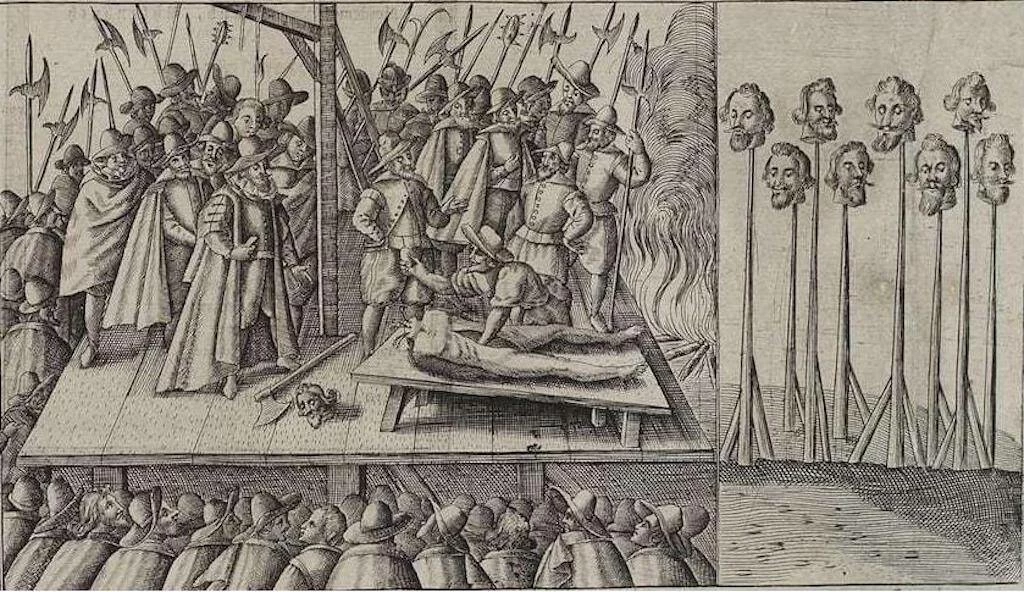
Pop Culture
The Gunpowder Treason Plot inspired many works in pop culture: literature, plays, movies, poems, and songs. Even the V for Vendetta comic book that emerged in the 1980s parallels a number of aspects with the 1605 plot, such as names of conspirators, appearances, and language.
The following is the popular Gunpowder Treason Plot poem and song that children all over the UK sing on a single night of the year in celebration of this key event in history. The English call this annual festival Bonfire Night.
Remember, remember the 5th of November
The Gunpowder, treason and plot.
I see no reason, why gunpowder treason
Should ever be forgot.
Guy Fawkes, guy, t’was his intent
To blow up king and parliament.
Three score barrels were laid below
To prove old England’s overthrow.
By God’s mercy he was catch’d
With a darkened lantern and burning match.
So, holler boys, holler boys, Let the bells ring.
Holler boys, holler boys, God save the king.
And what shall we do with him? Burn him!
Celebrating with Bonfire Night
The centuries-old tradition of Bonfire Night began on the very day of the plot itself. Delighted to have escaped with his life, King James had his footmen burn a huge bonfire. He insisted that they create and burn an effigy of Guy Fawkes prominently on top of the fire. Such an act also served as a reminder to any other potential plotters of what might happen to them if they considered trying something similar in the future.
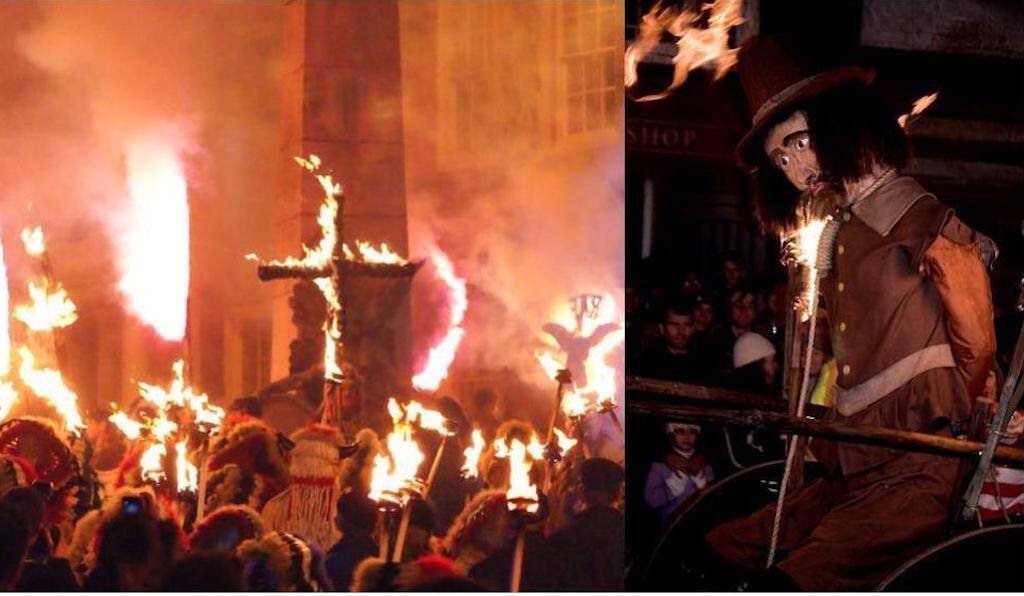
Had the Gunpowder Treason succeeded, the history of Great Britain may have been quite different. It’s hard to say if more or less tolerance for religious faiths would have been immediately achieved. The real outcome of the plot failure was less trust, much harsher laws, and less freedom for Catholics. But ultimately, religious persecutions stopped and, for the most part, freedom of religion exists in England. In 2010, even Druidry became an official religion. However, there is one thing that hasn’t changed since November 5, 1605. A meticulous search of all nooks and crannies precedes every State Opening of Parliament.
Additional sources:
History Learning Site
Spartacus Educational